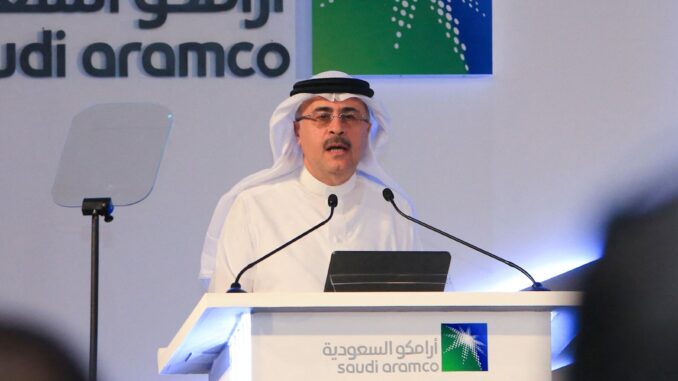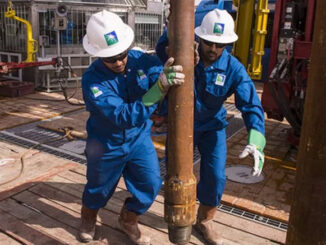
HIGHLIGHTS
More investment needed in existing oil projects: energy minister
Huge shortfall of oil products due to lack of refining capacity
Progress on Neutral Zone fields, working Durra development
Saudi Arabia’s crude production capacity is poised to reach 13.3 million-13.4 million b/d by end-2026 or early 2027 as it looks to ramp up work at the Neutral Zone fields with Kuwait, Energy Minister Prince Abdulaziz bin Salman said May 16. The kingdom currently has the capacity to pump more than 12 million b/d of crude.
“We are going to [produce] 13.3 million-13.4 million b/d mostly from the Neutral Zone by the end of 2026-27,” Prince Abdulaziz said at the MPGC conference in Bahrain. “We can continue maintaining sustainable production. Like any other producer. We’re working in a market where backwardation is more a blessing than a curse.”
Riyadh has traditionally maintained a 2 million b/d spare capacity buffer, which it has used on request to help maintain global market stability during supply shocks such as the Gulf War in the early-1990s or the US invasion of Iraq in 2003.
Saudi Arabia pumped 10.40 million b/d of crude in April, according to the latest Platts survey of OPEC+ output by S&P Global Commodity Insights.
Riyadh has so far refused to comply with international pressure to release more oil, or deviate from the OPEC+ production deal with Russia since international sanctions were imposed on the Kremlin due to the Ukraine invasion. The OPEC+ alliance is easing back its production cuts in 432,000 b/d monthly increments — a pace that many consuming countries have said is too slow.
Existing projects
Many of the OPEC+ ministers have recently reiterated that the lack of upstream investment is one of the major reasons for higher oil prices.
The minister emphasized that even for a producer like Saudi Arabia it takes long leading times to add to production, which is why more investments are needed in existing oil projects.
“Please invest in the current existing fields and fields that will have a quick payback period,” he said. “Don’t invest in green fields because the energy markets will transition where these green fields will no longer be required.”
Prince Abdulaziz said even for Saudi Arabia it takes six to seven years of work to bring 1 million b/d online.
“It is about pre-engineering, pipes, wells to be drilled. It’s not switch on, switch off, if you don’t do it properly you look inefficient,” he said.
Neutral zone
The minister said the kingdom was making progress with Kuwait on increasing oil output from the Neutral Zone fields.
“We’re working to go back to old capacities which is 400,000 b/d,” he said. “We are working with Chevron on steam flooding and testing it to make sure that we can use new technology,” he said.
“If that improves the number will increase. It will take two years, but we’re trying to max to what level we can.”
He said that the development work the Durra field, which lies offshore and has a total production capacity of 1 Bcf/d of natural gas and 84,000 b/d of condensate, was moving in the right direction.
The Neutral Zone fields, a special, demarcated geographical region between the two countries, comprise an offshore Khafji field and an onshore Wafra field. Both the fields were offline for more than four years until 2020 due to a political dispute that was resolved with a signing of an agreement in December 2019.
Production in the zone is divided evenly between the two countries.
The Neutral Zone is a key source of additional barrels, as global spare capacity is expected to tighten significantly in 2022.
Crude production in the Neutral Zone has experienced some technical challenges stemming from the lengthy shutdown of the Wafra and Khafji fields, with output ranging from below 200,000 b/d for some months to as high as 270,000 b/d.
Prior to their shutdown in the mid-2010s, the fields typically produced a combined 500,000 b/d of medium and heavy sour crudes.
Refined products reality
The prince reiterated that it was not only the lack of upstream investment but the dearth of refining capacity that was causing a dislocation in refined products.
“So, when demand is growing as a result of recovery from the pandemic, we’re facing another reality which is the facilities where oil converted into useful products has shrunk and is shrinking. So, it is not a shortage of crude,” he said.
In recent years, only countries such as China, Saudi Arabia and Kuwait have invested in big refining projects.
Refining margins have skyrocketed in recent months as the Russia-Ukraine war upended the global oil trade and many western countries started to boycott Russian oil.
Profit margins for refining oil products such as diesel, jet, and gasoline soared to over $50/b at some instances after the war, surpassing record highs.
Russia is a significant supplier of oil to the world, exporting more than 7 million b/d of crude and petroleum products, or some 13% of the total oil trade.
Source: Spglobal.com



